Nendo works with traditional manufacturer to redesign chopsticks
Japanese studio Nendo has redesigned the humble chopstick, creating six new versions including one with a profile that looks like a flower (+ slideshow).

Nendo collaborated with a traditional manufacturer of lacquered chopsticks from the town of Obama in Japan's Fukui Prefecture to produce a range of contemporary designs that provide novel twists on the style, materials and functionality of the ubiquitous product.
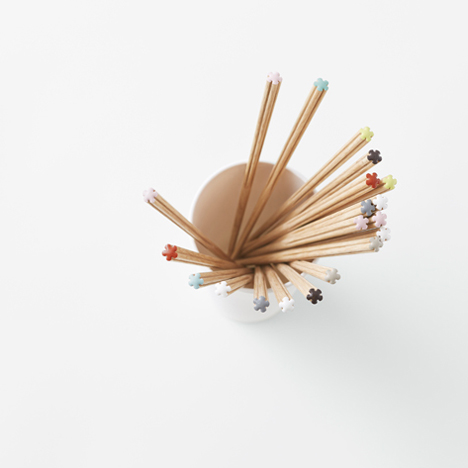
"Obama's lacquered chopsticks have been recognised as the hardest and most beautiful of Japanese lacquer chopsticks since the seventeenth century, when they became known as 'Wakasa-nuri'," said the designers.
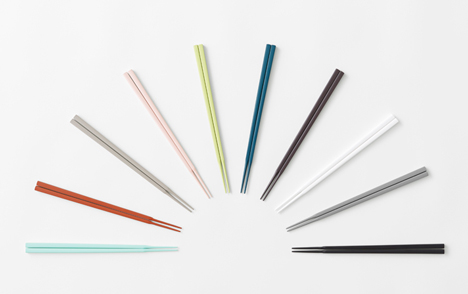
"We designed new chopsticks in collaboration with Hashikura Matsukan, a manufacturer who continues Obama's traditional manufacturing techniques today."
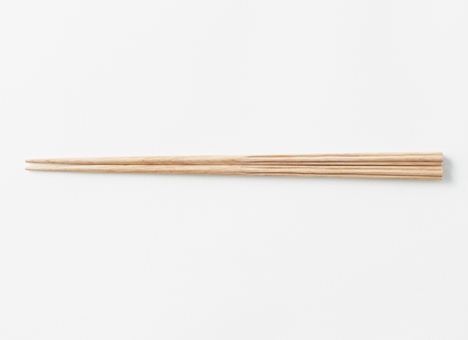
The Hanataba chopsticks feature grooves in the broader end that increase the surface area and improve grip. The grooves create a shape on the end that resembles a flower and can be painted different colours.
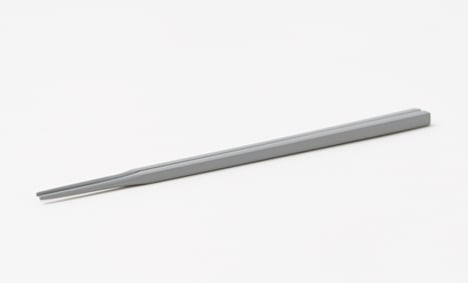
The tips of the Jikaoki chopsticks are carved to a thin point so they avoid touching the surface when placed on the table.
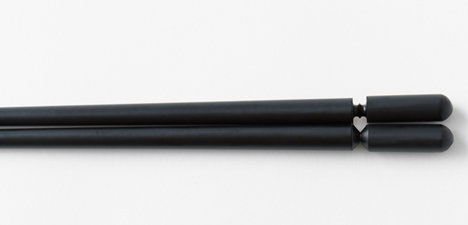
Instead of applying pattern to the surface of the chopsticks, the Sukima design creates the shape of playing card suits in a gap between the sticks.
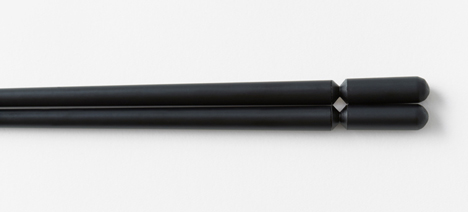
The wood is carved into different shapes that produce the negative form of hearts, clubs, diamonds and spades when the sticks are placed next to each other. An aluminium core is embedded inside the wood to compensate for the weakness created by the carving.
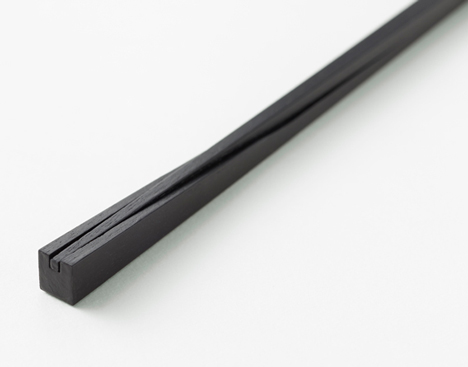
A gap in one side of the square-shaped Kamiai chopsticks enables the two pieces to snap together when not in use.
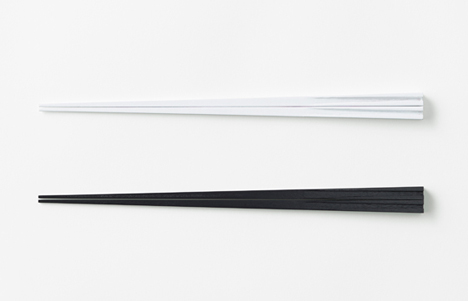
Magnets placed on the outside of the sticks hold them in place but stop them sticking together while eating.
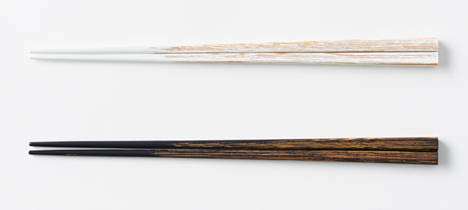
The traditional udukuri process of carving away the surface of wood with a wire brush to reveal the grain, lacquering them and polishing them again to show the lacquer embedded in the grain was used to create a set of chopsticks with the same name.
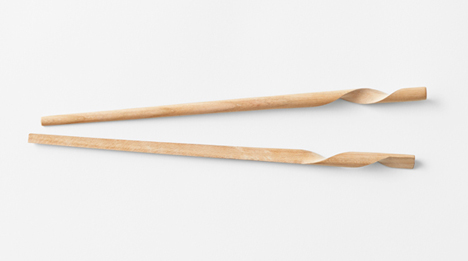
A simple twist carved into the end of the Rassen chopsticks, produced using a combination of a computer-controlled milling machine and handcrafted processes, enables the two pieces to slot together as one piece.
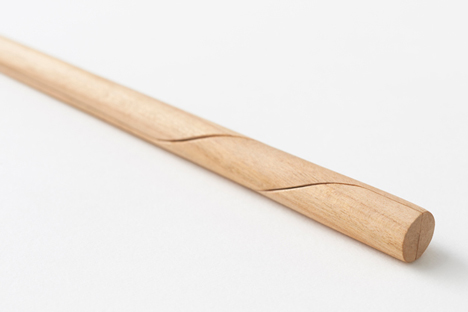
All of the designs will be sold exclusively at Seibu departments stores in Japan from spring 2014.
Photography is by Akihiro Yoshida.
Here are some more details about the project from Nendo:
New chopsticks for Hashikura Matsukan who continues traditional manufacturing techniques known as “Wakasa-nuri”
For four centuries, the town of Obama in Fukui Prefecture, Japan, has manufactured lacquered chopsticks. Obama's lacquered chopsticks have been recognised as the hardest and most beautiful of Japanese lacquer chopsticks since the seventeenth century, when they became known as 'Wakasa-nuri'. We designed new chopsticks in collaboration with Hashikura Matsukan, a manufacturer who continues Obama's traditional manufacturing techniques today.
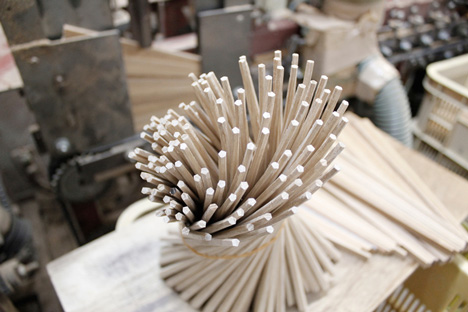
Hanataba
Round chopsticks are slippery to use, but overly square-cornered ones aren't as comfortable to hold. We explored ways of increasing the surface area of chopsticks in the hand, as a way of improving holding comfort, and discovered the natural form of the pleated cross-section.
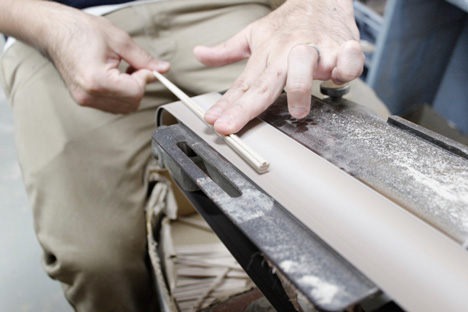
When viewed as a cross-section, the chopsticks look like flowers, so a bunch of chopsticks kept together into a cup turns into a 'bouquet'.
Jikaoki
The firm's expert artisans carefully carved away the chopsticks' tips to fine points, so that they float above the tabletop when the chopsticks are laid down for cleanliness, even without chopstick rests.
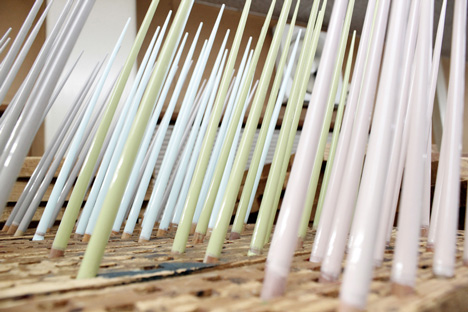
Sukima
The world is full of patterned chopsticks, so we wondered if it wouldn't be possible to create pattern in the space between the chopsticks. We came up with four patterns: hearts, diamonds, clubs and spades. The two chopsticks are carved into different shapes for all patterns but the diamonds, but it's possible to use one of the diamond chopsticks as the top chopstick with a spade, or the bottom chopstick with a heart, for a total of four different patterns from the four different chopstick pairs.
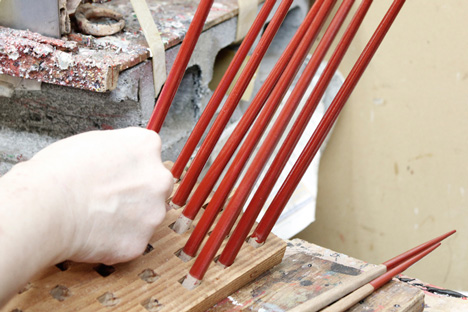
The carving made the chopsticks so thin that they weren't strong enough with wood alone, so we embedded a carved aluminum core in the wood to solve the problem.
Kamiai
We put a gap on one of the four sides of the square shaped chopstick,and embedded a magnet, so that the two would snap together in one piece when they are flipped and fitted to each other.
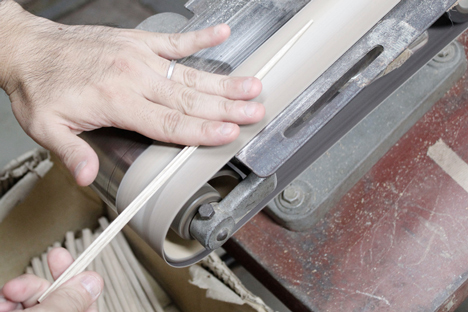
We placed the magnets towards the outside of each chopstick, so that the chopsticks don't come together accidentally while someone is using them to eat.
Udukuri
We used the udukuri process, in which the wood surface is carved away with a metal brush, leaving only the hard wood grain, then lacquered the chopsticks and polished them again to bring out the wood grain as pattern.
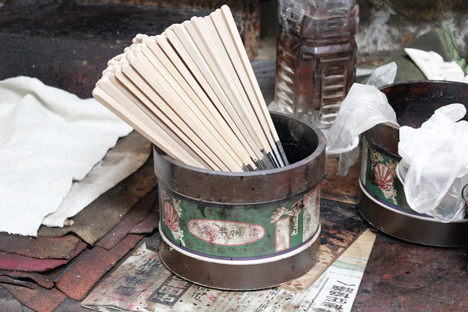
The traditional technique, in which materials clamshells, eggshells and gold leaf are applied with the lacquer then polished away to reveal a pattern is known as 'togidashi' (literally 'to polish and show'), and is particular to Wakasa-nuri. Unlike patterns drawn by hand, this combination of processes allows patterns from nature to appear organically.
Rassen
Chopsticks ordinarily come in pairs, but the rassen chopsticks are a single unit.
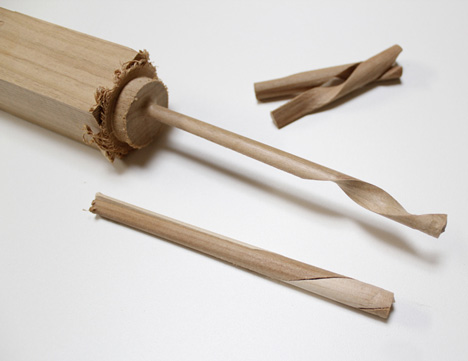
They're separated into two for eating, then rejoined into one form when not in use. We used the artisans' hand skills and a multi-axis CNC miller to create these unusual chopsticks.